The Best Hotels and Resorts in the World: The Gold List 2024
Consider Gold List the answer to the question our editors get asked more than any other: What are your favorite places to stay? Our 30th annual iteration of the world’s greatest hotels and cruises captures nearly a year’s worth of work: This collection of 75 resorts and hotels represents hundreds of hours of researching, scouting, and impassioned debating by our team of editors in seven cities across the globe. But more than that, it reflects our ongoing love affair with the places where we stay, which often become our gateways to entire destinations. Read on to inspire your next trip.
ASIA
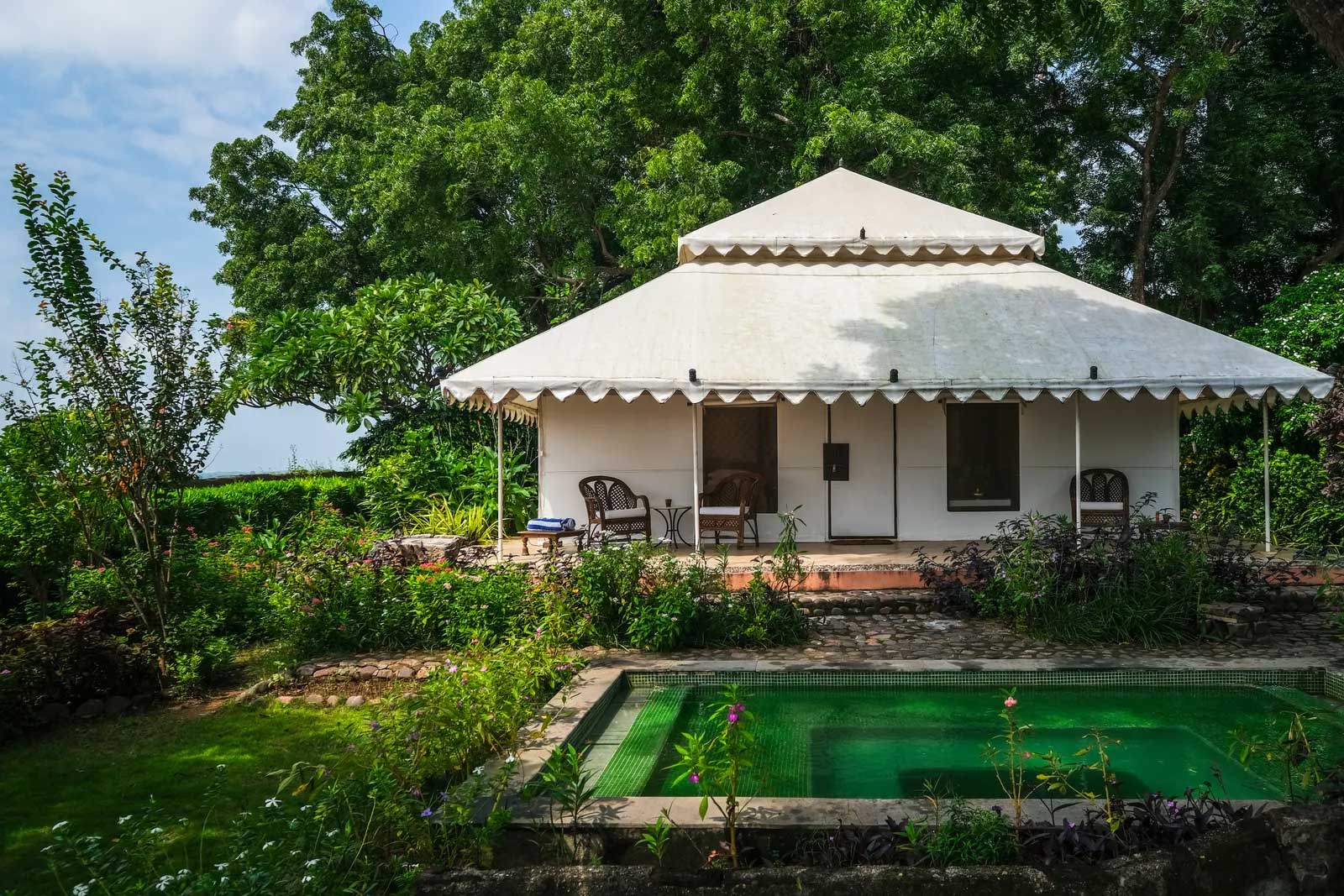
Ahilya Fort Heritage Hotel Maheshwar – India
In Madhya Pradesh, the state at India’s heart, this 18th-century sandstone fort on the banks of the Narmada River was restored by the descendants of Queen Ahilyabai Holkar, the monarch of the Maratha Empire. Since its partial conversion to a hotel by Prince Richard Holkar in 2000, it’s become a place to sink into the slower, spiritual side of India—on birdsong-filled terraced gardens over-looking the river or in the fort’s 250-year-old Ganesh temple, with its enormous bell suspended from an ancient champa tree. Nineteen rooms are scattered over six buildings and intricate maze-like ramparts. The vivid hues of Maheshwari saris enliven the calming palettes of whites and pastels. Today’s prince is intimately involved, designing and planting the hotel gardens and insisting on conscious hospitality, from strict rules around plastics and waste water to supporting the local Rehwa Society, which has revived the dying art of Maheshwari hand-weaving, especially for saris. Lunch salads from the organic garden and thali suppers are served in surprising nooks: in the garden, under a lush canopy of vines, or on a rounded rampart. The afternoon tea service, aboard a hand-poled wooden boat drifting along the river, is a treat. Unfailingly gracious staff can arrange magical excursions, from sunset and sunrise cruises to village walks, temple visits and riverside arti prayer ceremonies. Every morning, 11 Brahmin priests perform the ancient Lingarchan Puja, a Hindu blessing ritual, near the covered breakfast mandap—just one of many moments to treasure here. From $420. – Shunali Khullar Shroff
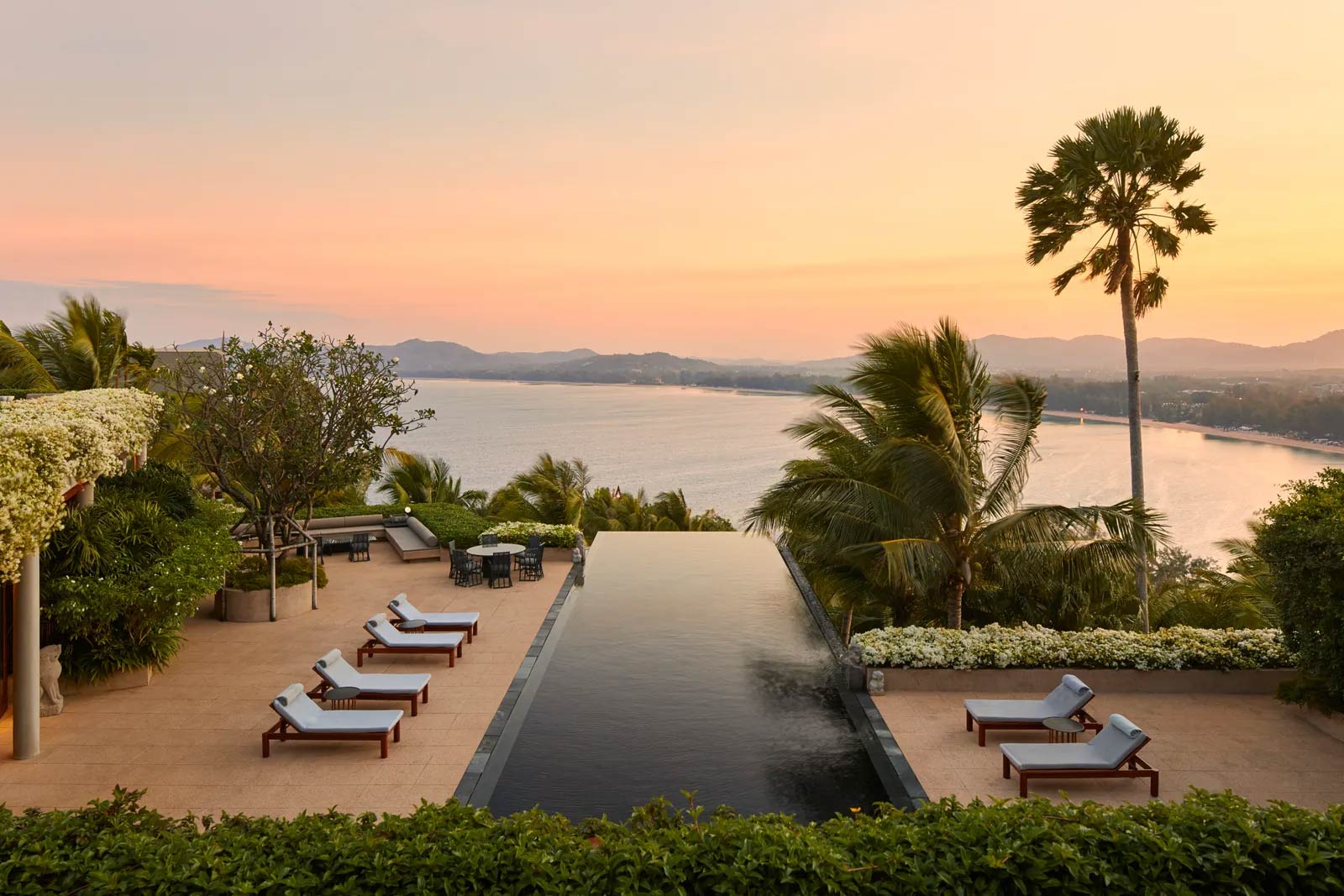
Amanpuri – Phuket
The original outpost of the globe-spanning Aman empire, this Phuket location was initially intended as a holiday home for Indonesian hotel guru Adrian Zecha. Eventually, he expanded the blueprint into a small boutique resort that opened in 1988. In the following decades, Amanpuri became a hush-hush haven for monarchs and supermodels, with yearly touch-ups and regular renovations (an extensive makeover finished last summer) constantly making it look as if it was brand-new. The hotel’s Thai temple-like pavilions have since been imitated by resorts all over Southeast Asia. But the ones surrounded by lush gardens and coconut palms here, accented with timeworn Buddhist antiques and fresh orchids, still feel like the real deal. During a recent project, the pavilions’ honey-hued interiors shed their low-slung ceilings to reveal the high-pitched teak wood beams that were hidden behind, while the rather poky old bathtubs in the mirror-clad bathrooms were replaced with newer models. The property frequently appears in Condé Nast Traveler’s Spa Guide, and for good reason: its Holistic Wellness Centre, which offers everything from crystal healing sessions to hi-tech IV infusions and medical check-ups, is one of Thailand’s very best. Despite the worldwide acclaim, the resort remains blissfully serene even during the high season, although scoring the best canvas-covered beach cabanas can turn into a game of musical chairs. Ask one of the hosts to try to reserve your favorite one. From $1,770. – Chris Schalkx
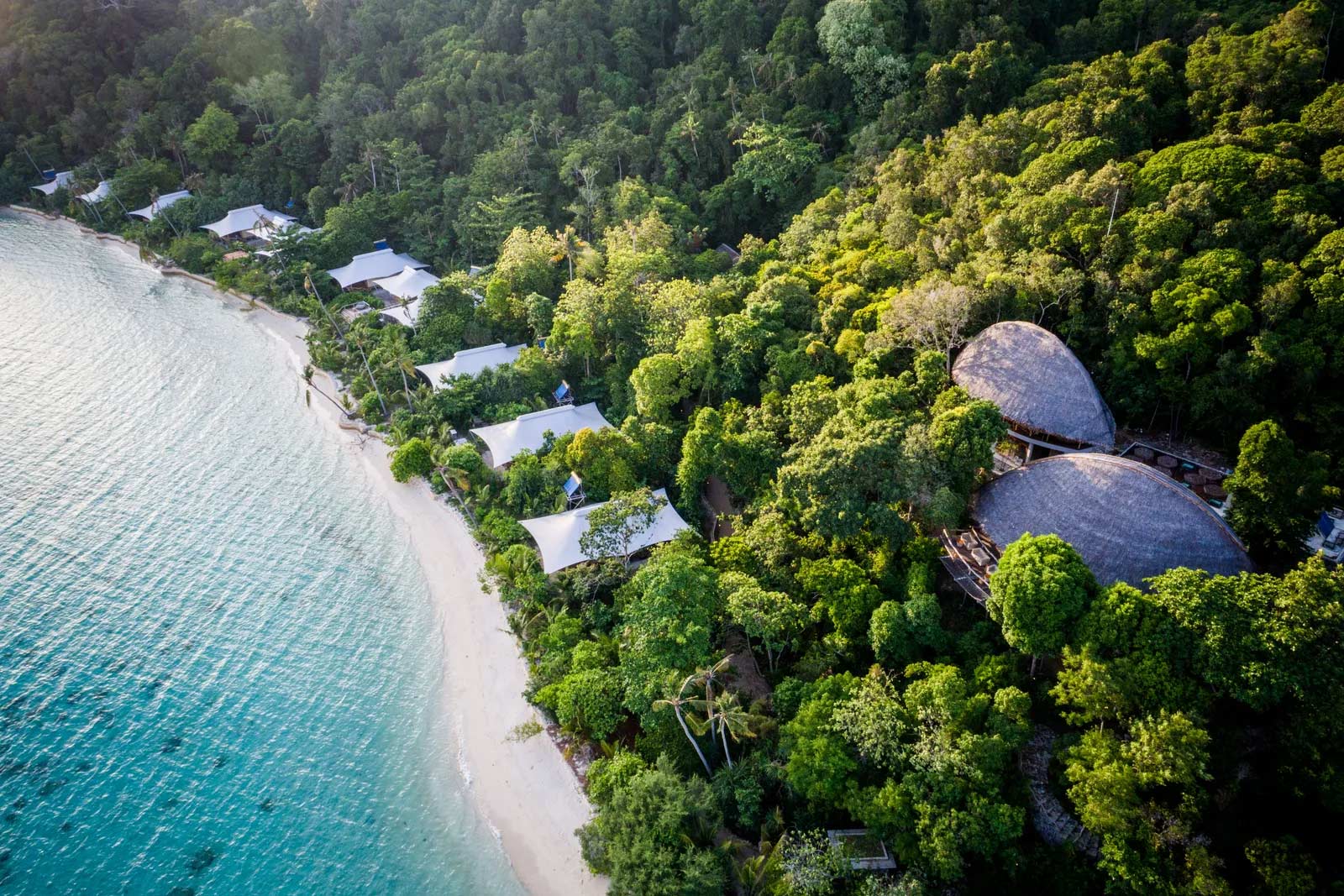
Bawah Reserve – Indonesia
Bawah is the largest of the six islands in this tiny archipelago. There are 36 suites, villas and lodges here, a line-up of restaurants and bars, walking trails through primary forest, open-air massages, an immaculate lawn tennis court, nature-immersed spas and a boutique. Singapore-based shipping magnate Tim Hartnoll was on a sailing holiday when he dropped anchor to discover these lush outcrops of islands and their sheltered lagoons. So began the journey to create a hideaway resort. Villas are over-water, some front the beach or are set back in the forest. Stone staircases lead to the sea, where the water is so clear that it’s possible to spy marine life without even putting on a mask. Sundowner cocktails are as wonderful as you might expect—there is The Grouper, a laid-back poolside bar, or up the hill, Jules Verne. Dining can be at Tree Tops in the canopy or on the beach at The Boat House. Guests can also opt for private dining at various spots around the islands. The spas offer daily massages (included in your stay) as well as traditional masks, scrubs, compresses and wraps using local ingredients, such as coffee, cocoa and raw honey. The property sits in the Anambas archipelago and is an 80-minute flight from Batam, an Indonesian island that’s a quick boat ride from Singapore. Many of Indonesia’s 17,000 plus islands have been smashed by overdevelopment, palm oil plantations, plastic waste and water pollution, which is why Bawah and its fierce environmental program feel so crucial. For principled eco credentials and a sense of lost world remoteness, there’s nowhere like Bawah. From $1,892. – Michelle Jana Chan
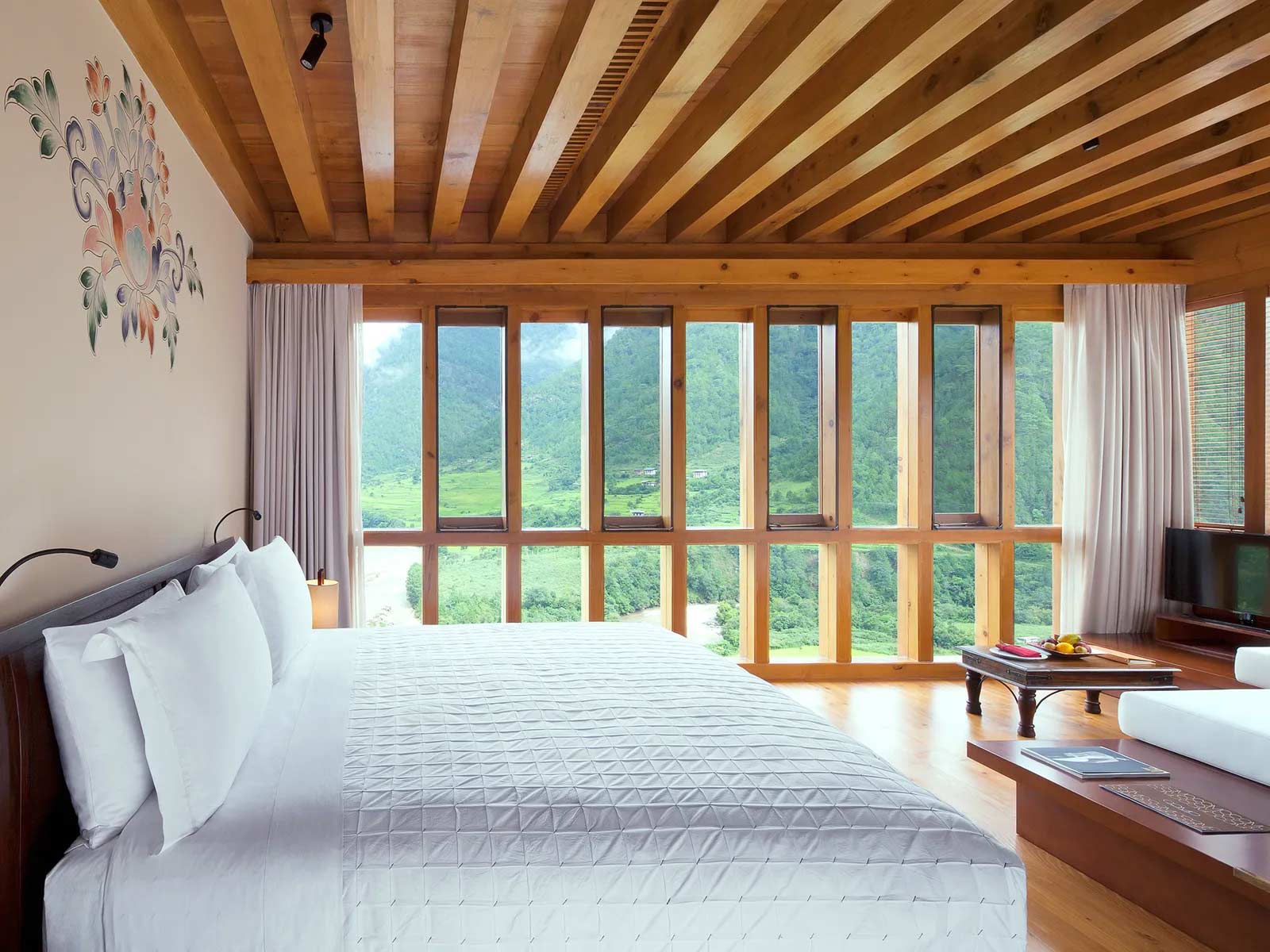
Como Uma Punakha – Bhutan
The Como brand blends beautifully into this emerging, ecologically fragile Himalayan nation, with its overriding focus on wellness, sustainability, community and sense of place. The region of Punakha enjoys Bhutan’s balmiest climate, and it is to its Dzong fortress-monastery that the entire monk body migrates to escape the fierce chill of winter. The footprint of this rural hideaway is gentle: only 11 rooms. The low-slung structure, built like a local fortress, perches high on a river bluff, with double doors opening into a leafy courtyard. Each bedroom serves as its own mini retreat with yoga mats, local herbal teas and bath soaks. There are heart-stopping, floor-to-ceiling views high over Bhutan’s main river: the sedate, meandering Mo Chhu, flowing below terraced rice paddies and forests of pine. The decor is minimalist and sober, so as not to detract from the wild natural canvas in all its lush shades of green. The warmth comes from the texture of wood and stone, which is also the star of one of the signature treatments in the small spa: a bath, heated by fire-baked river stones that crack when they hit the water and release restorative minerals. The elemental theme continues in the restaurant, where a fire blazes in the wood-burning stove, acting as a cosy backdrop for warming dishes that headline local produce—from the buckwheat that goes into delicious pancakes and noodles to some of the nation’s many species of wild mushroom. From $730. -Catherine Fairweather
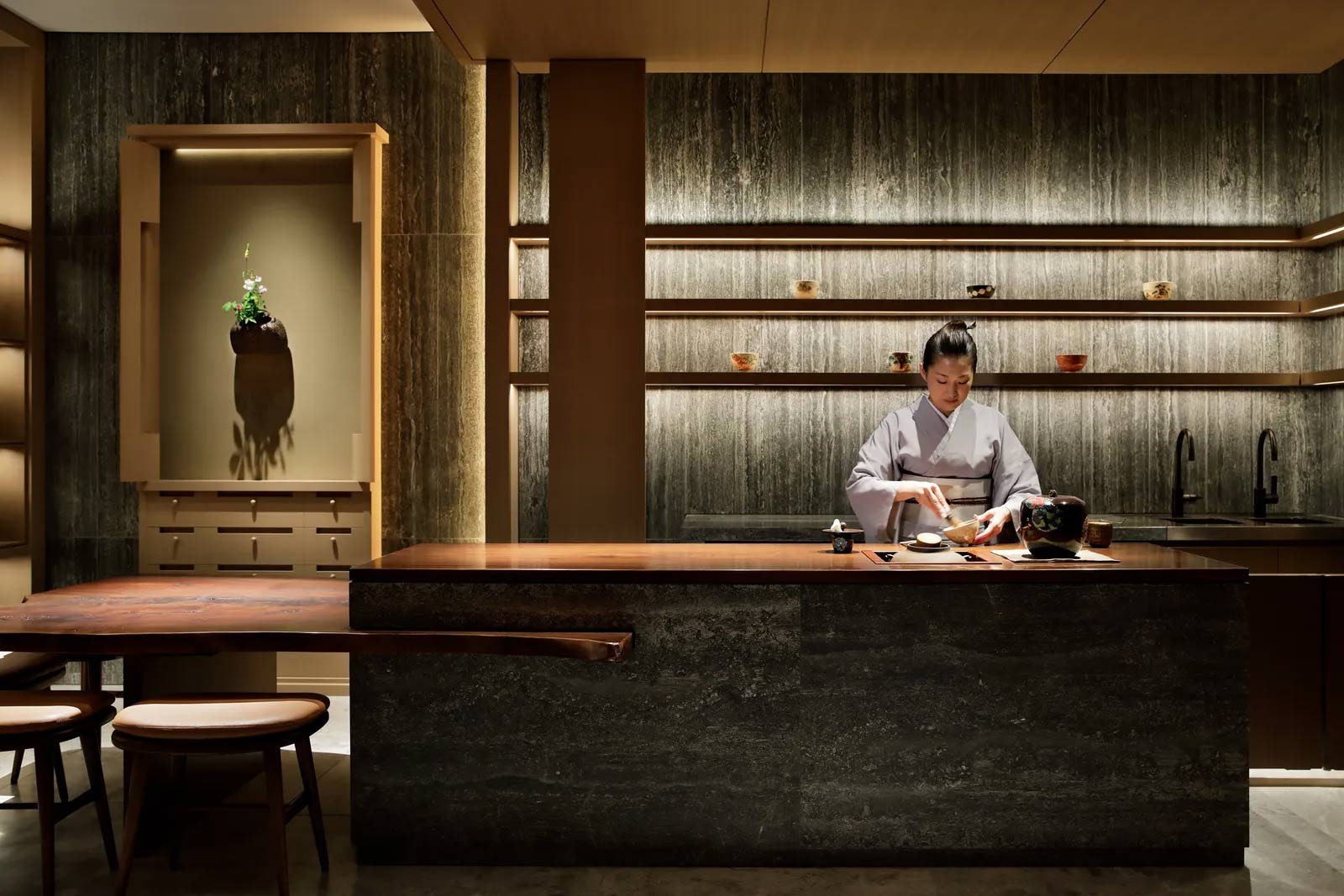
Hotel the Mitsui – Kyoto
It’s a bold move to open a design-forward property in a city that has fully tied its identity to the past. Even bolder to build it on the exact site where the long-prominent Mitsui family had a residence from the late 1600s to the 1940s. But once you hear the storybook ending—how in 2015 the Mitsui corporation’s real estate arm bought back this beloved parcel of land—it makes sense. While the sleek André Fu–designed spaces break from Kyoto’s usual decor tropes, the past is everywhere. See, for instance, the 300-year-old wooden gate that once demarcated the original estate. There are subtle signifiers too: a long corridor with blond wood arches that echo the maze of torii gates at Kyoto’s famed Fushimi Inari shrine, a ceiling installation inspired by kimono fabric. But it’s the practical yet cosseting touches—the neatly folded pajama set that appears at turndown, the sprawling underground onsen—that will shape this next chapter of the Mitsui legacy. From $1,359. – Rebecca Misner
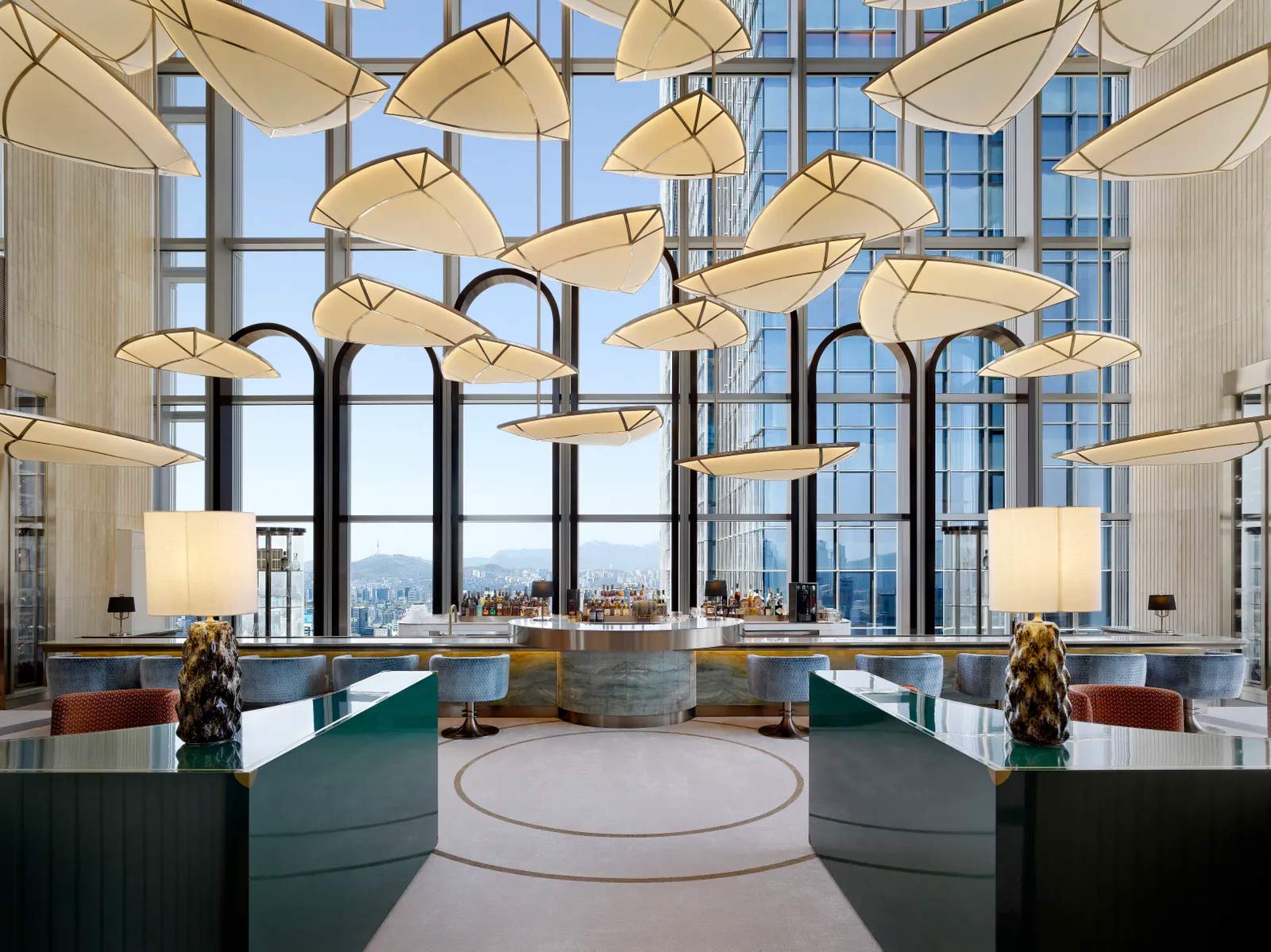
Josun Palace – Seoul
In the past few months, a moody, romantic, retro aesthetic has swept TikTok, inspired by Wong Kar-wai’s 2000 film In the Mood for Love. An enterprising influencer could easily create a viral sensation in this vein by shooting at Josun Palace, a Luxury Collection Hotel. Unlike the movie, which is set in Hong Kong in the 1960s, it is in Seoul and opened just a few years ago. But the hotel, set in a 36-story tower in Gangnam, has the same kind of stylized, cinematic glamour. I was there with my family, but as I moved through the gilt-and-green Korean and midcentury-modern-inspired interiors, taking in the sweeping city views, it was easy to imagine myself playing a role in a noirish story of star-crossed lovers or a twisty tale of international intrigue. Elevators whisked us to the 25th floor reception, where a phalanx of hotel staff was ready to address our every question and need, from how to get to the T Galleria department store to scoring a reservation at a nearby restaurant and a babysitter to watch the kids. Our room, though not enormous, was space enough for the four of us, with tasteful decor and an incredible bathroom. Day or night, the city vistas were riveting, the new Lotte World Tower looming on the horizon from rooms on the east side of the hotel. The sensation of hushed, cinematic romance gets turned up to 11 in Eatanic Garden, the hotel’s own Michelin-starred progressive Korean restaurant. Over the evening, a parade of delightful surprises by chef Son Jong-won emerged, like the kettle of barley tea nestled in a bouquet of flowers and the trio of playful bites atop colorful pedestals. Each dish came with a card that told its story. As we completed the meal, we felt we’d reached the end of a journey—just as when we checked out of the hotel, when it felt like the credits were rolling on this beautiful visit to Seoul. From $380. – Jesse Ashlock
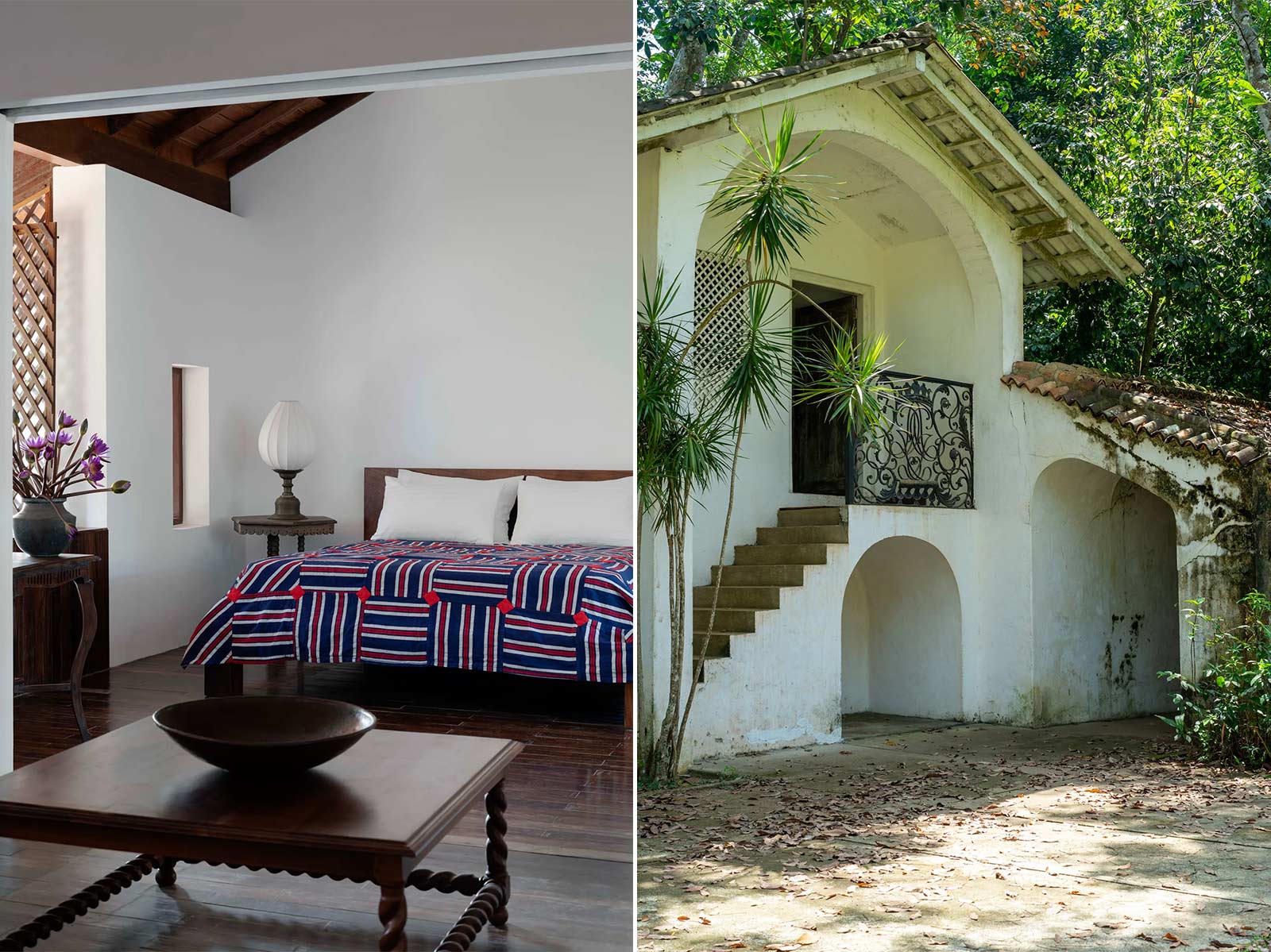
Lunuganga – Sri Lanka
The late, great architect Geoffrey Bawa’s jungle home is reveling in a glossy new dawn. While this otherworldly estate on Sri Lanka’s southwest coast remains packed to the rafters with history, it’s now embracing modern comforts thanks to the home-grown Teardrop Hotels collection (also behind the Fort Bazaar in Galle Fort), which manages the property with the Geoffrey Bawa Trust. The meticulous work of the father of tropical modernism shines from every corner, with almost everything as he left it. Bawa spent 50 years curating this wonderland, originally an abandoned rubber plantation, creating his inside-outside spaces and furnishing them with Burgher antiques and objets from his travels. The jewel in the crown is the show-stopping garden, with emerald rice paddies alongside butterfly-shaped ponds and moss-covered Ming pots on manicured lawns. Spread across the house and garden, the 10 spacious bedrooms are unique and sublime: one a glass-walled pavilion framed by trees, another a former cowshed turned gallery. Teardrop’s Midas touch extends to the kitchen, marrying Sri Lankan plates with international dishes made from local produce: egg hoppers for breakfast, grilled fish for lunch and coconut and mustard fish curry for dinner. There’s a breezy veranda restaurant, but Bawa’s preferred lunch spot was under a jackfruit tree, with a salvaged temple bell dangling above. After opening batik artist Ena de Silva’s three-bedroom villa (another Bawa triumph) on the edge of the estate, the Geoffrey Bawa Trust has added a hilltop pool and unsealed the architect’s own bedroom, perhaps the biggest treat of all. From $387. – Harriet Compston
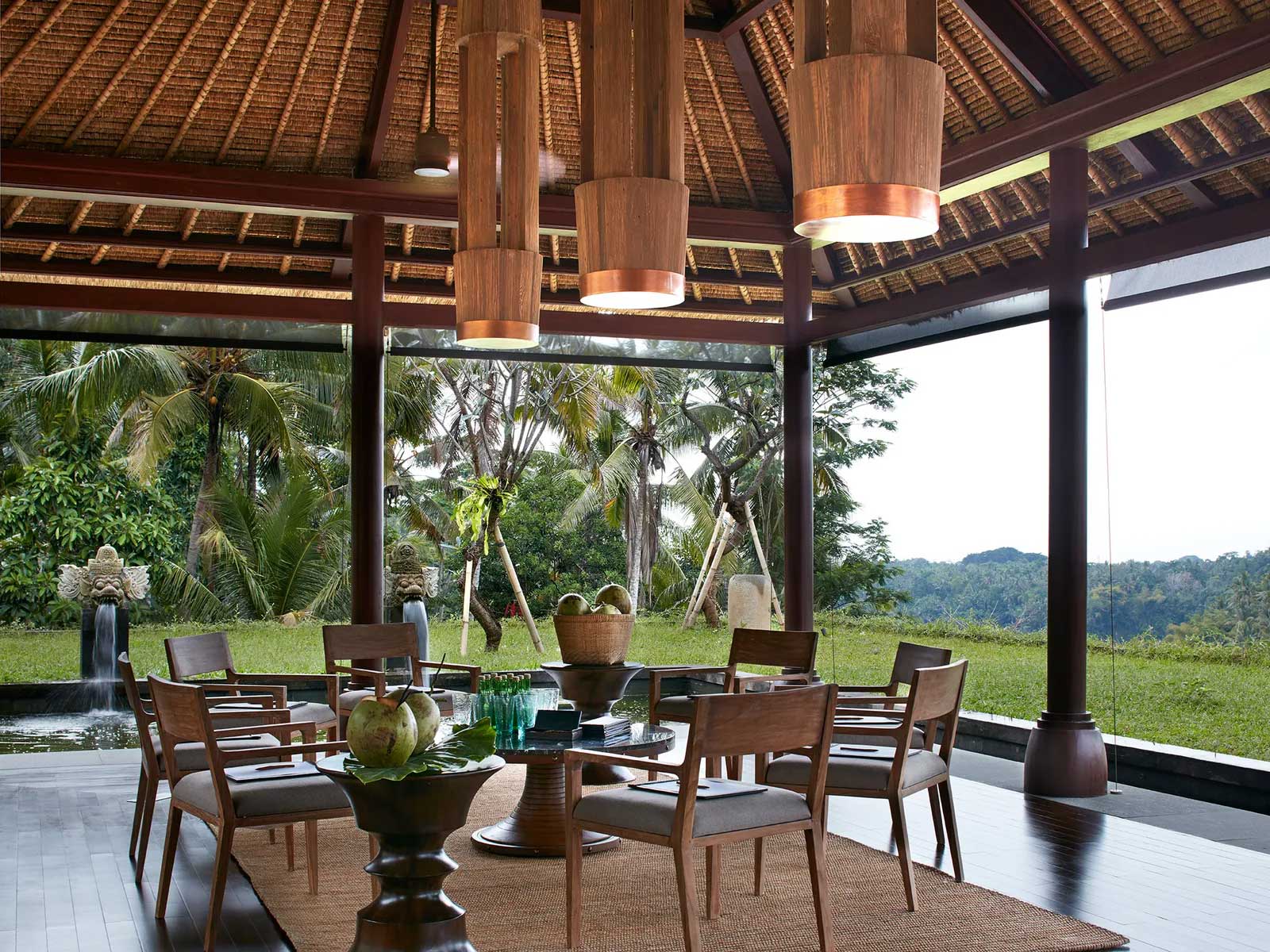
Mandapa Ritz-Carlton Reserve – Bali
When the Ritz-Carlton Hotel Company bought an area of untamed land more than 10 years ago, it purchased twice the amount it needed to add another jewel to Bali’s hospitality crown. The result is a sprawling hotel footprint across 25 acres surrounded by lush rainforest and rice paddies that dramatically cascade down hillsides. Luminous dragonflies buzz, butterflies flit their kaleidoscopic wings and doe-eyed frogs croak in the distance—rather than interfering with their surroundings, this property honors them. Forget rooms, there are 60 suites and villas here, ranging in size from substantial to palatial. Bathtubs for two are wrapped in rattan and scented with ginger-lily salts, large balconies offer panoramic views of the sunset-facing valley and villas have infinity pools. Days start with breakfasts of jewel-colored fruits and steaming Javanese coffee. Supper is served in Japanese Ambar Ubud Bar and Kubu at Mandapa, where Eka Sunarya delights diners over eight- and 10-course tasting menus that utilize all the landscape has to offer. Families are welcome, and little ones are catered for in the kids’ club, which favors activities in the open air over technological distractions. It’s just as well, as missing out on a treatment in the riverside spa would be nothing short of a crime. From $1,249. – Lee Cobaj
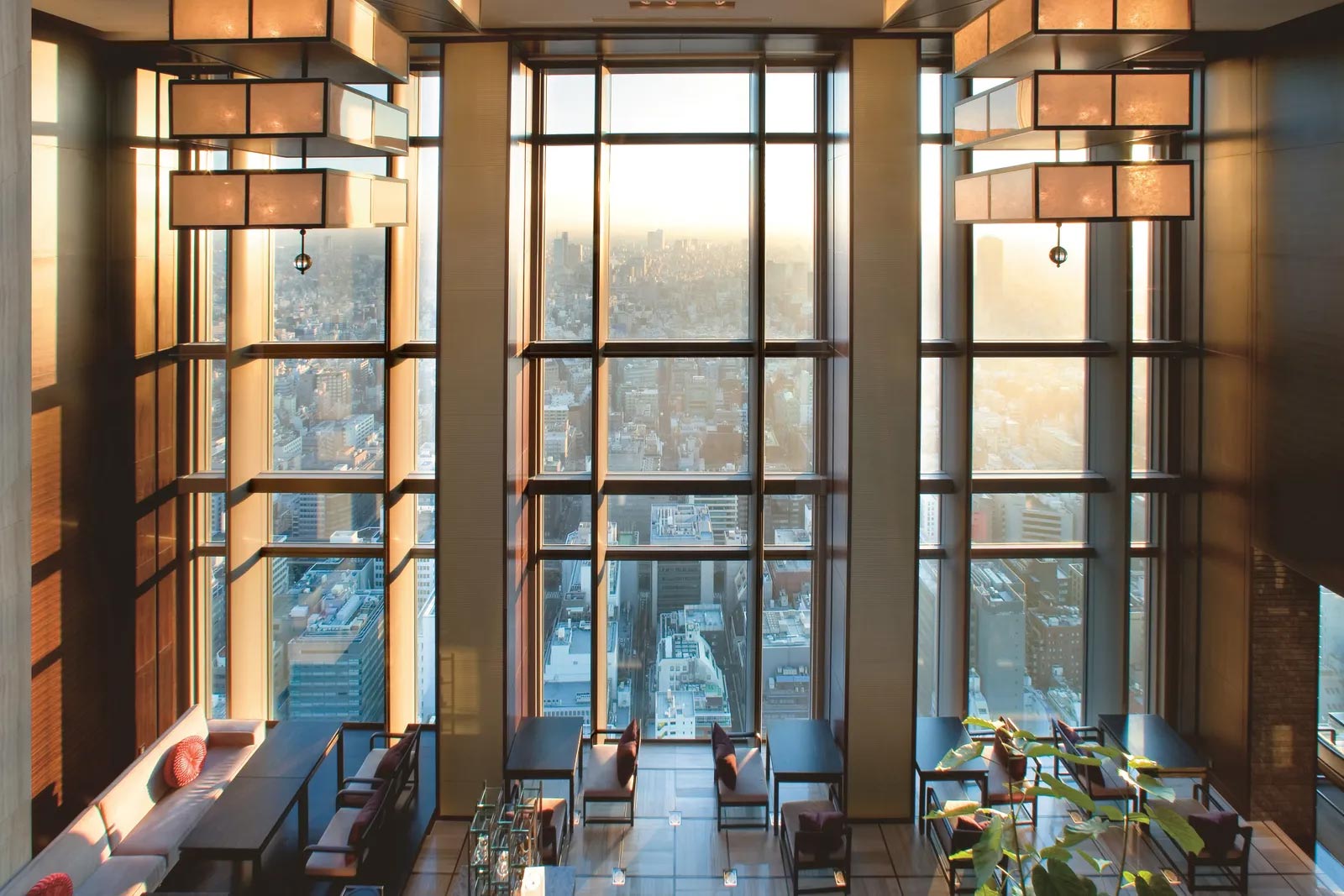
Mandarin Oriental Tokyo
Photos don’t do Tokyo’s Mandarin Oriental much justice. Rising to the upper floors of the Nihonbashi Mitsui Tower, the 38th-floor lobby is like a gallery to the capital’s best angles. It’s the same in the rooms: No matter the category, the view is paramount from your tranquil retreat in the sky, as the frenetic financial district eases down below and, on cloudless days, Mount Fuji glistens in the distance. Comfort is prime here too. Beds are as supple as the sheets are slippery. And if you can’t find a perfect pillow on the extensive “pillow menu,” it’s not the pillow—it’s you. Room service can get expensive, but the menu itself is so long and varied (from macaroni and cheese to okayo don) that it’s worth a look. And yet, there are so many dining options on the property—from an actual pizza bar to haute Cantonese to a silver-lined French restaurant—that every in-house venue deserves a gander. For example, Sushi Shin by Miyakawa is perhaps the city’s most atmospheric sushi restaurant: A nine-seat L-shaped counter, made from a 350-year-old cypress tree, sits next to a floor-to-ceiling window that perfectly frames Tokyo Skytree. Dip sushi as the sun dips, too, and the city lights up by nightfall. If you care to step outside, the location is convenient. It’s just around the corner from famous kimono shops and hallmark department stores; and Ginza is a short stroll away. From $800. – Keith Flanagan

Peninsula Shanghai
This Art Deco landmark puts you right in the heart of China’s most fascinating city, and it’s a gorgeous embodiment of what Shanghai has always been about—a unique fusion of East and West, old and new, silken elegance and wild energy. The vibe in the rooms can be summed up as “stealth luxe”—subdued, though never dull; approximately 1920s in feel, though without a hint of pastiche. If you have the privilege of choice, aim for the best possible view of the skyscrapers of Pudong, on the opposite side of the river, which are lit up at night like a gigantic jukebox, pulsating with all the can-do energy of modern China. As for the hotel’s food and drink, its Michelin-starred Yi Long Court is widely held to be among the best Cantonese restaurants in the city. Sir Elly’s Terrace, on the 14th floor, has some of the finest views of any rooftop bar in the city. The Pen occupies a prime spot at the far end of The Bund, a mere eyelash of a street on the western bank of the Huangpu River and one of the most fascinating, glamorous, and confounding roads in the world. All of Shanghai is here and in the adjoining alleys. It is true that there are other hotels on The Bund and in the city, but the Pen is the Pen—and I brook no further argument. From $359. – Steve King
Rosewood Hong Kong
To experience Rosewood’s flagship hotel is to see it as the essence of a resurgent Hong Kong. From its lavish interiors, courtesy of the refined hand of designer Tony Chi, to the staggering views of Victoria Harbor and the wealthy tastemakers that ebb and flow through its lobby, it is the embodiment of its heady hometown. Its towering presence is also more than just a stake in the ground for a spruced-up Victoria Dockside: It is the gateway to Hong Kong’s new cultural epicenter that’s crowned by the West Kowloon District, an ambitious 100-acre waterfront development just a couple of miles north. Peppered with museums and cultural centers, as well as some ritzy retail, this corridor has turned into a swarming hub for locals and travelers—exactly as Rosewood’s Cheng family intended. Still, the 413-room “vertical estate” does its very best to keep you indoors. If you can tear yourself away from the glossy lacquer and custom cashmere in your room, you’ll find an incredible swathe of restaurants—12 in total—including Chaat, a Michelin-starred Indian heavyweight. You’d do just as well to retreat to the cosseting cocoon that is the 40th-floor Manor Club, which operates like an ultra-exclusive private club, with its wraparound terrace, complimentary spreads through the day (everything from wonton soups to viennoiserie and top espressos), and staff that magically anticipate your every need. And if the city’s famed nightlife, reinstituted after the pandemic years, doesn’t lure you outside, join well-heeled locals at Darkside, Rosewood’s sultry new jazz bar that’s named for the old moniker for Kowloon (once considered a den of iniquity), where you can order a Gibson and slip into a Hong Kong state of mind. From $830. – Arati Menon
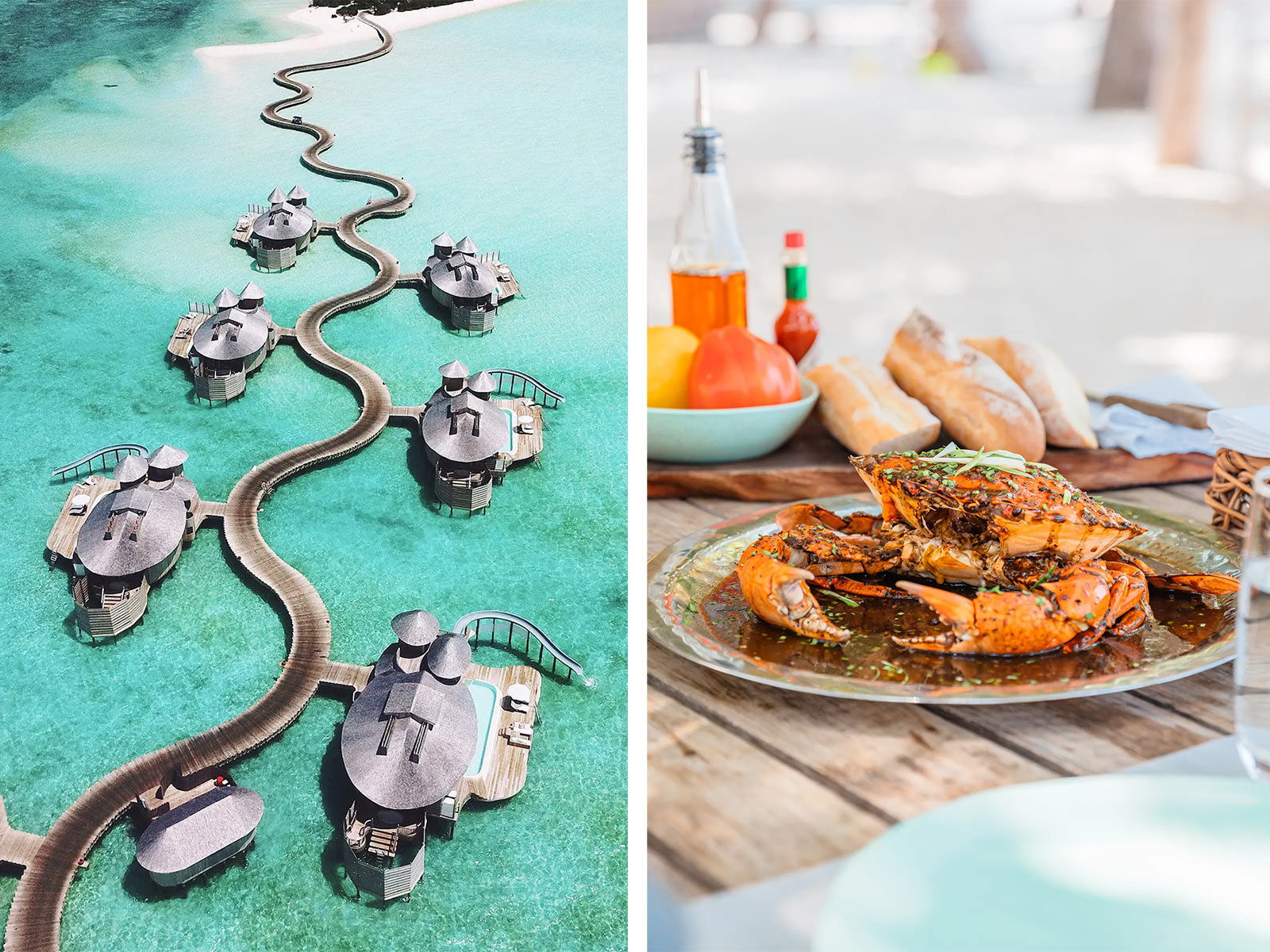
Soneva Jani – Maldives
On the fringe of a lagoon in Noonu Atoll, blanketed in racing-green jungle and ringed with neon-white beach, Soneva Jani is the second Maldivian island home of the visionary brand. It’s an unreal world, where children and adults alike trail about the jungly interior on bikes, hang in hammocks on Robinson Crusoe beaches, throw themselves down slides, splash about on technicolor reefs and watch dolphins race through iridescent baby-blue waters. The overwater villas have glass-bottom floors and pool decks with corkscrew slides, and the fantastical Den, just a year and a half old, is the largest kids’ club in South Asia. But it’s not just about embracing your inner child. Adult treats include The Gathering, on the north side, an overwater barn of restaurants, a library and wine cellar. Eating is taken seriously—from a meat-free outpost by Bocuse d’Or-winning Swedish chef Mathias Dahlgren to the garden-set idyll So Local, as well a rotation of visiting chefs (2024’s include Tom Aikens and Jane Alty, co-owner of London Thai street-food hero The Begging Bowl). A treehouse-like Island Spa has egg-shaped rooms linked by walkways floating towards a yoga shala. Soneva Soul is the brand’s new, more ambitious approach to health. This year, it has launched three-, seven- and 14-day wellness journeys around foundational health, sleep, detoxing and anti-aging, using its magic blend of naturopathy, Ayurveda and Traditional Chinese Medicine alongside high-tech treatments such as platelet-rich plasma therapy and ozone therapy. Feeling well is at Soneva’s core—way beyond ditching one’s shoes on arrival. From $2,397. – Lydia Bell
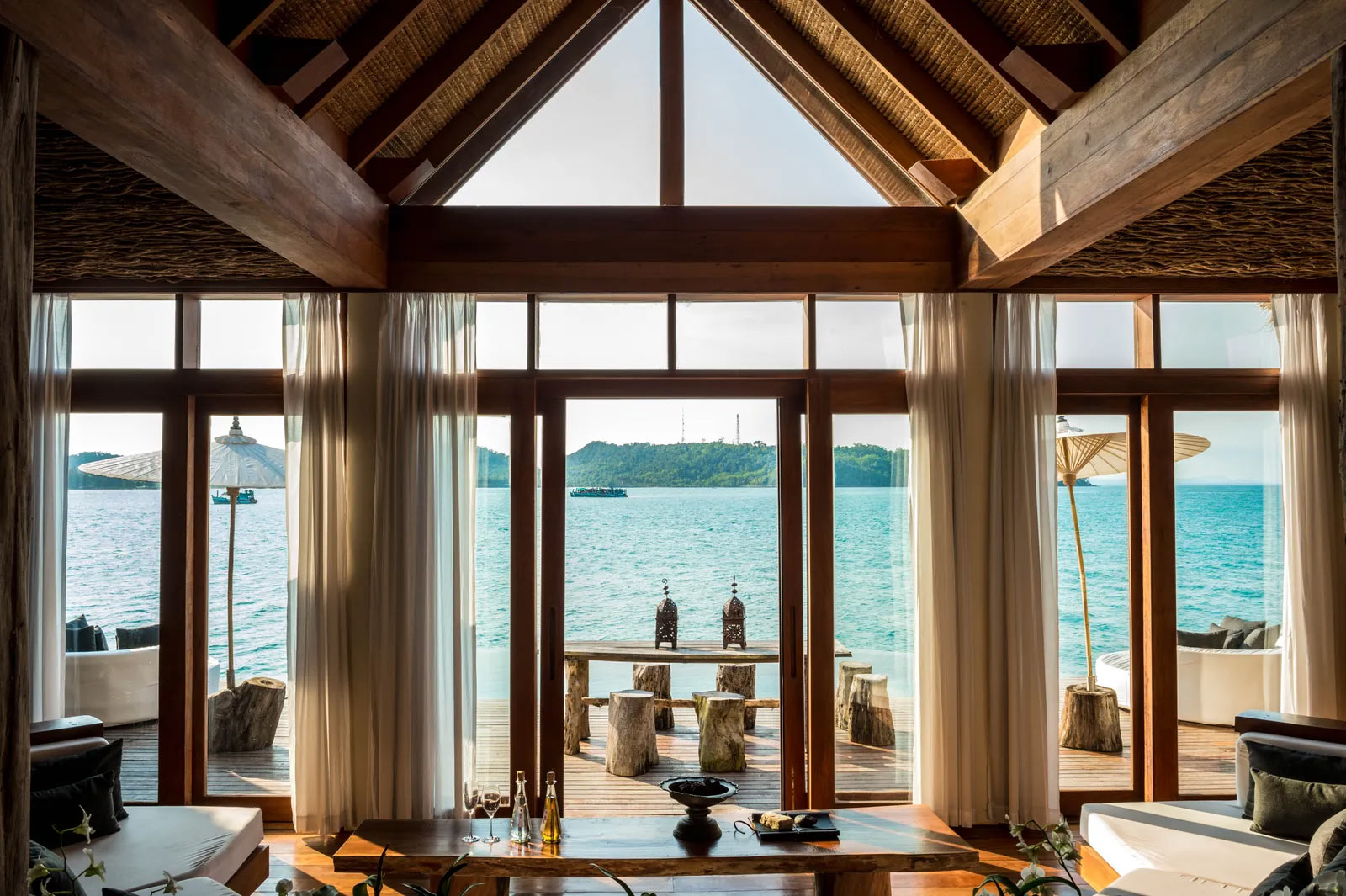
Song Saa – Cambodia
Like many of the world’s greatest private island retreats, southern Cambodia’s Song Saa has all the trimmings of a tropical fantasy: there are stilted wooden pathways snaking to overwater villas, and private-pooled hideaways burrowed in the thick jungle cloaking the island’s hilly spine. At breakfast, shoals of silvery fish shimmer like fine jewels in the glassy swell below my feet. And when the sun beams overhead, skinny palms leave shadowy patterns on the talcum-white sand hemming the snug, lounger-dotted bay. There’s only so much pool-lolling and beach-lazing I can handle, which can make castaway islands sometimes feel like a gilded cage. But Song Saa is different. A short boat-hop to nearby Koh Rong, the largest island in the eponymous archipelago, drops guests right into coastal Cambodian life for a fix of bustling fishing hamlets, coconut farms draped over low-slung hills and Buddhist temples with kaleidoscopic interiors. The Song Saa Foundation, which established the country’s first protected marine reserve in the coral-rich waters surrounding the island, is missioned to keep it that way: community outreach projects and a dedication to maintaining the environmental footprint at a minimum earned the island a B Corp certification in 2023. Cambodia’s coastal regions might be plagued by overdevelopment, but Song Saa’s blueprint for mindful hospitality delivers a glimmer of hope. From $1,022. – Chris Schalkx
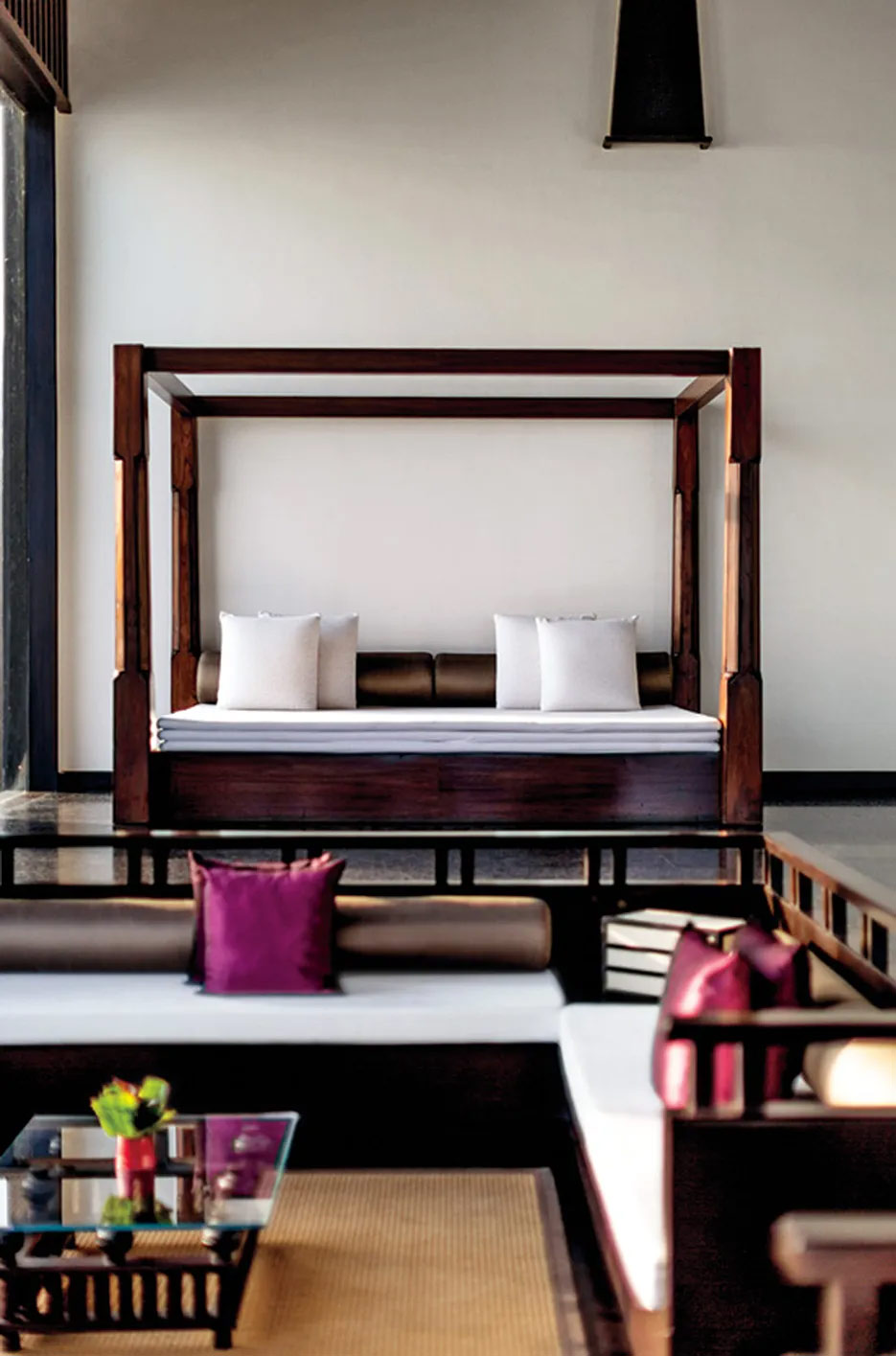
Taj Madikeri Resort & Spa – India
Located in the Western Ghats, a UNESCO World Heritage Site, Taj Madikeri is set at the crossroads of Coorg’s wildlife sanctuaries. The hill town property falls under India’s historic Taj Hotels group, credited with opening the nation’s first luxury hotel—The Taj Mahal Palace, Mumbai—at the turn of the 20th century. Not a single tree was felled in its making. In fact, more were added, as dozens of trees that would otherwise have been cut down were brought in from outside the property. The 63 stand-alone cottages and villas—with more in the works—are well spaced across the steep landscape, each surrounded by greenery and panoramic views. The hotel has four restaurants and a bijou bar, and can organize open-air dining experiences across the property—from the forested Buddha Garden to the 101-candle-lit amphitheater encircled by a large lotus pond. Coorg’s waterfalls, highlands and lakes have led it to be called the Scotland of India, but even that title doesn’t convey how special it is. Above all, savor daybreak here. As you listen to the soft patter of rain against subtropical fronds and the sweet schoolboy trill of a Malabar whistling thrush floating through the morning mist, the serenity of Taj Madikeri Resort & Spa simply sings. From $251. – Julian Manning
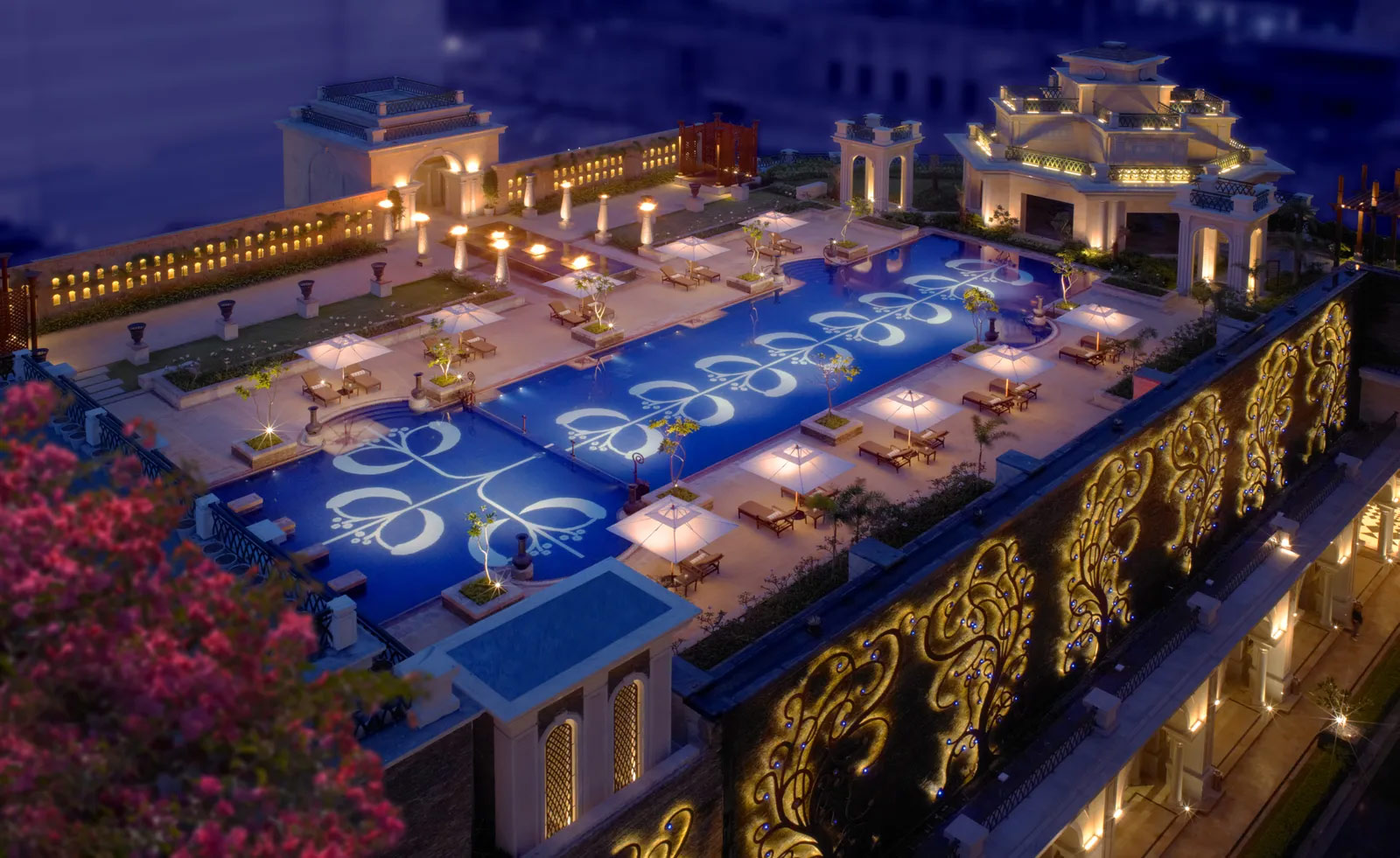
The Leela Palace Chennai – India
One of the originals of the Leela group, The Leela Palace Chennai is spot-on for so many reasons. For starters, it nails the location. Set in nearly five acres of prime seafront in the heart of the city, the hotel offers proximity to business and leisure destinations as well as the feeling of being away at a seaside resort. The designers have made every use of the setting and provided a significant number of sea-facing rooms. Restaurants China XO and Jamavar—the former serving Cantonese-focused fare and the latter dishes from India’s north and south—are easily among Chennai’s best. Even if gold isn’t your color and over-the-top opulence not your style, you’ll still love the thoughtful and impeccable butler service that has me returning time and time again. From $160. – Prasad Ramamurthy
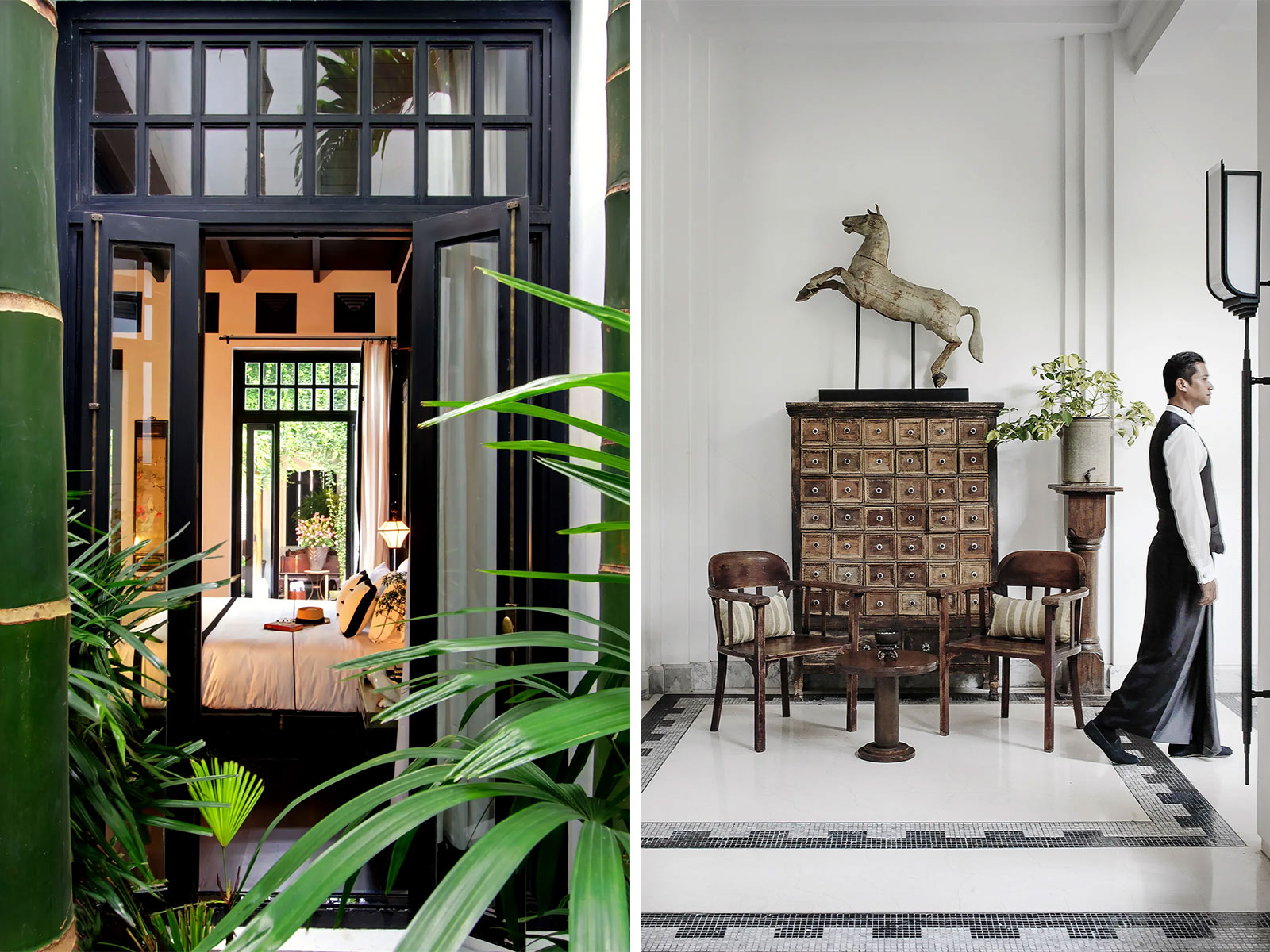
The Siam – Bangkok
Compared with many of its rivals, this Bangkok stalwart doesn’t have a location that’s wildly convenient: the postcard sights need a boat transfer, and most top tables are more than a 30-minute taxi ride away. But for me, and the legions of other loyal fans of this monochrome masterpiece by hotel guru Bill Bensley, that’s the point. Pitched up on a lush riverside plot in the hushed Dusit district, The Siam feels like a portal to a bygone Bangkok. Even though it opened a decade ago, it’s easy to imagine it as a plush playground for the city’s erstwhile big guns, the mid-century movers and shakers whose heirlooms—vintage Pan Am posters, tattered travel trunks and chipped ceramics—adorn the marble-floored hallways. I’d be hard-pressed to point friends to a lovelier lunch spot than the hotel’s Thai restaurant, set between the timeworn pillars of three ancient teakwood houses, where butlers in dressy black sarongs deliver the kind of classic Thai hospitality—lilting “sawadee ka” greetings and tables set with fresh orchids—that’s becoming harder to find. None of which is to say that the hotel is stuffy—there’s a tattoo parlor in the spa. An ongoing refurb is keeping suites and private-pooled villas looking fresh. And with the opening of a Jim Thompson homeware boutique in the wooden house the illustrious silk magnate helped procure for its former owners, things have come full circle. The Thai capital’s five-star hotel scene gets plusher every year, but this timeless beauty remains in a league of its own. From $618. – Chris Schalkx
Read more – Original Article






